
Agha Mohammad Khan Qajar, also known by his regnal name of Agha Mohammad Shah, was the founder of the Qajar dynasty of Iran, ruling from 1789 to 1797 as Shah. Originally a chieftain of the Quwanlu branch of the Qajar tribe, Agha Mohammad Khan was enthroned as the king of Iran in 1789, but was not officially crowned until March 1796, having deposed Lotf Ali Khan of the Zand dynasty in 1794. Agha Mohammad Khan Qajar was famously the eunuch Monarch, being castrated as a young adult upon his capture by Adel Shah Afshar, and hence was childless. He was assassinated on 17 June 1797, and was succeeded by his nephew, Fath-Ali Shah Qajar.

Mohammad Shah was the third Qajar shah of Iran from 1834 to 1848, inheriting the throne from his grandfather, Fath-Ali Shah. From a young age, Mohammad Mirza was under the tutelage of Haji Mirza Aqasi, a local dervish from Tabriz whose teachings influenced the young prince to become a Sufi-king later in his life. After his father Abbas Mirza died in 1833, Mohammad Mirza became the crown prince of Iran and was assigned with the governorship of Azarbaijan. After the death of Fath-Ali Shah in 1838, some of his sons including Hossein Ali Mirza and Ali Mirza Zel as-Soltan rose up as claimants to the throne. With the support of English and Russian forces, Mohammad Shah suppressed the rebellious princes and asserted his authority.

Fath-Ali Shah Qajar was the second Shah (king) of Qajar Iran. He reigned from 17 June 1797 until his death on 24 October 1834. His reign saw the irrevocable ceding of Iran's northern territories in the Caucasus, comprising what is nowadays Georgia, Dagestan, Azerbaijan, and Armenia, to the Russian Empire following the Russo-Persian Wars of 1804–1813 and 1826–1828 and the resulting treaties of Gulistan and Turkmenchay. Historian Joseph M. Upton says that he "is famous among Iranians for three things: his exceptionally long beard, his wasp-like waist, and his progeny."

The Shāh Abdol-Azīm Shrine, also known as Shabdolazim, located in Rey, Iran, contains the tomb of ‘Abdul ‘Adhīm ibn ‘Abdillāh al-Hasanī. Shah Abdol Azim was a fifth generation descendant of Hasan ibn ‘Alī and a companion of Muhammad al-Taqī. He was entombed here after his death in the 9th century.

PrinceAbdol-Hossein Farman Farma was one of the most prominent Qajar princes, and one of the most influential politicians of his time in Persia. He was born in Tehran to Prince Nosrat Dowleh Firouz in 1857, and died in November 1939 at the age of 82. He was the 16th grandson of the Qajar crown prince Abbas Mirza. He fathered 26 sons and 13 daughters by 8 wives. He lived to see four sons of his first wife die within his lifetime.

Prince Firouz Nosrat-ed-Dowleh III, GCMG (1889–1937) was the eldest son of Prince Abdol-Hossein Farmanfarma and Princess Ezzat-ed-Dowleh Qajar. He was born in 1889 and died in April 1937. He was the grandson of his namesake, Nosrat Dowleh Firouz Mirza, and of Mozzafar-al-Din Shah Qajar through his mother, Princess Ezzat-Dowleh.

Fereydun Mirza was a Qajar prince, governor and poet in 19th-century Iran. The fifth son of Abbas Mirza, he held the governorship of Tabriz (1833–1834), Fars (1836–1840), and Khorasan (1851–1854).
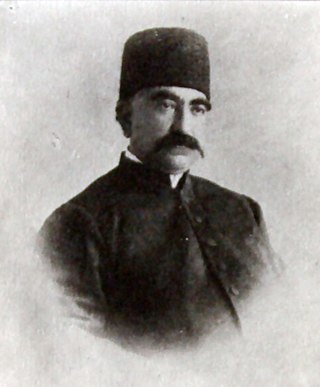
Kamran Mirza was a Persian Prince of Qajar dynasty and third surviving son of Nasser al-Din Shah. He was the brother of Mass'oud Mirza Zell-e Soltan and Mozzafar al-Din Shah. He was also the progenitor of the Kamrani Family. He might have been Prime minister of Iran for a few days in April–May 1909, but this is not clearly referenced. Kamran Mirza also served as Iran's Commander-in-Chief, appointed in 1868 for the first time, and minister of war from 1880 to 1896 and from 1906 to 1907.
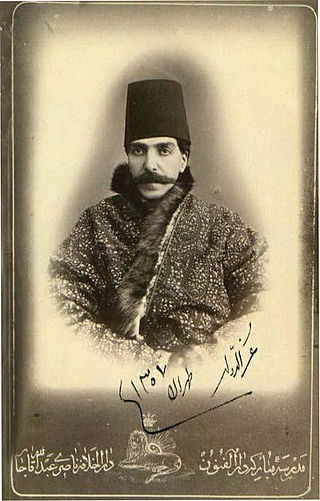
Abdosamad Mirza Ez od-Dowleh Saloor was a Persian prince of Qajar Dynasty and fifth son of Mohammad Shah Qajar by his wife Ogholbeigeh Khanum, a lady of Turkmen origin. He is the ancestor of Salour (Saloor) family.
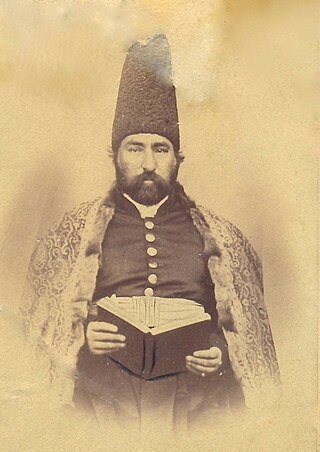
Bahman Mirza was a Qajar prince, literary scholar, and writer who lived in Iran and later the Russian Empire. The fourth son of the former crown prince Abbas Mirza, his career in Iran was marked by several governorships, including the province of Azerbaijan (1841–1847).
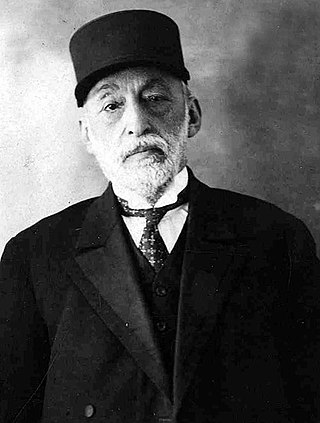
Mehdi Qoli Khan Hedayat, also known as Mokhber-ol Saltaneh, was Prime Minister of Iran and an author of several books on Iranian music, modern education, poetry, current affairs, and most notably a memoir covering his political tenure under the last 6 kings of Iran.

Prince Malek Mansur Mirza (1880–1922) Iranian prince of Qajar dynasty, was Mozaffar al-Din Shah's second son, brother of Mohammad Ali Shah Qajar, Abul-fat'h Mirza Salar-ed-Dowleh and Abul-Fazl Mirza.

Bahram Mirza Moezz-od-Dowleh was a Qajar prince, statesman and governor in 19th-century Iran. The second son of the crown prince Abbas Mirza, he served as the Minister of Justice from 1878 until his death on 21 October 1882.

Hajji Ebrahim Shirazi, also known by his honorific title E'temad ol-Dowleh, was an Iranian statesman who served as the kalantar of the city of Shiraz during the late Zand era and later as the first grand vizier of Qajar Iran.
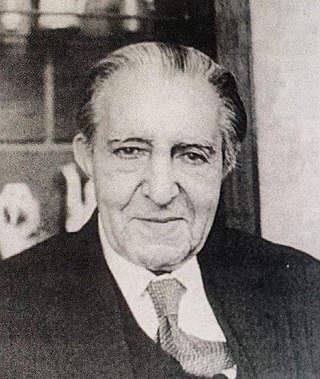
Amirteymour Kalali, also known as Sardar Nosrat, was a prominent Iranian statesman and aristocrat. He served as the minister of interior and minister of labour in the cabinet led by Prime Minister Mohammad Mosaddegh. He was a member of the Parliament of Iran for nine terms.
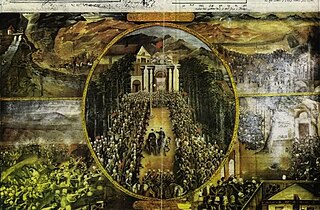
The Triumph of Tehran refers to the entrance of the pro-constitutionalists in Tehran on 13 July 1909, which led Mohammad Ali Shah Qajar to seek refuge at the Russian legation in Tehran, before he was sent in exile. The event ended the period in Iranian history known as the minor tyranny.

Maryam Shahabi was a Persian aristocrat and major landowner.

Mir 'Ali Mardan Shah, Nuzrat ol-Molk was head of the Timurid dynasty in 19th-century Persia.

Abdollah Mirza Qajar was an Iranian prince (shahzadeh) of the Qajar dynasty, the 11th son of Fath-Ali Shah, king of Qajar Iran from 1797 to 1834. Abdollah was the governor of Zanjan. He had two children, Mohsen Mirza and Shams al-Molok, with his wife. Other than that, he had 19 sons and 9 daughters from his concubines.
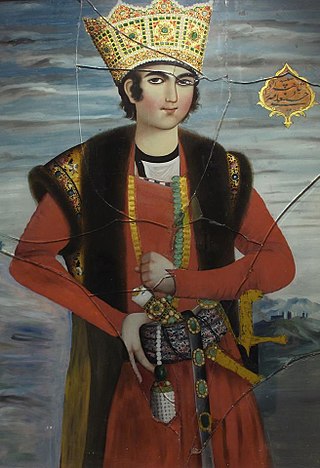
Hossein Ali Mirza, a son of Fath-Ali Shah, was the Governor of Fars and pretender to the throne of Qajar Iran.



















